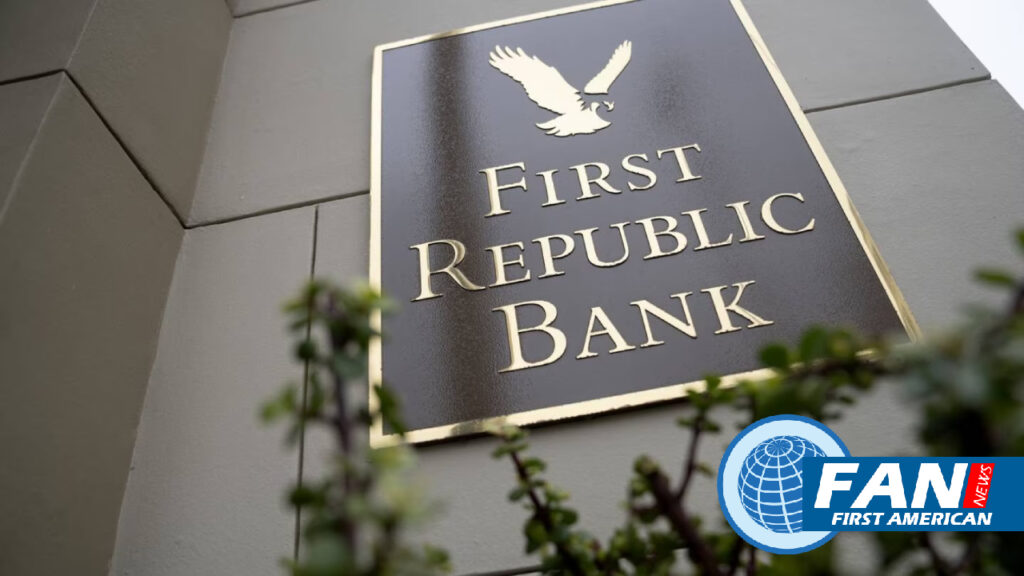Economy
WSJ News Talks About What’s Going On With First Republic Bank
What happened to First Republic Bank?
WSJ News reported that First Republic, the 14th-largest U.S. commercial bank, was one of the banks swept up in the contagion that followed the March 10 failure of Silicon Valley Bank. Similarities center on their size and their largely uninsured deposit bases.
Why does First Republic Bank need deposits?
Like many U.S. regional banks, First Republic has been facing worries that its depositors will leave.
Silicon Valley Bank failed because its core business of banking venture-capital firms and their startups was bleeding funds, creating a continuing cash need. But the firm had invested heavily in long-term bonds whose value was badly hurt by the Federal Reserve’s interest-rate increases over the past year, meaning it could sell them only at a loss.
When Silicon Valley Bank tried to raise cash anyway, its depositors, largely business customers whose accounts were well above the $250,000 Federal Deposit Insurance Corp. protection limit, fled. Uninsured depositors across the system took notice and First Republic, which had some two-thirds of its deposits in uninsured accounts, came under scrutiny.
“With the closure of several banks in March, we experienced unprecedented deposit outflows,” First Republic said Monday. “We moved swiftly and leveraged our high quality loan and securities portfolios to secure additional liquidity,” it added, meaning it used pledged assets as collateral to borrow from others.
What has been the response to First Republic Bank’s problems?
Shares of First Republic and many other financial firms were briefly lifted in mid-March after the biggest banks in the U.S. swooped in to shore up First Republic. Under the plan, 11 banks including JPMorgan Chase & Co. placed $30 billion in deposits at First Republic, using their own funds, confirming an earlier report by The Wall Street Journal.
How did the attempt to rescue First Republic Bank work?
JPMorgan, Citigroup Inc., Bank of America Corp. and Wells Fargo & Co. are each making a $5 billion uninsured deposit into First Republic. Morgan Stanley and Goldman Sachs Group Inc. are kicking in $2.5 billion apiece, while five other banks are contributing $1 billion each.
The move in part sought to restore confidence in regional banks by showing that the largest firms, which are widely perceived as beneficiaries of the unrest, are willing to put their money to work there.
“This show of support by a group of large banks is most welcome, and demonstrates the resilience of the banking system,” said a group of U.S. regulators led by Treasury Secretary Janet Yellen.
Did the rescue plan for First Republic Bank succeed?
It didn’t. The day after the rescue was announced, the bank said it was suspending its dividend; its shares slumped further, fueling speculation over whether First Republic has a future as a stand-alone bank.
The selling has continued despite the Journal reporting that at one point JPMorgan chief Jamie Dimon was leading discussions among large banks aimed at bolstering First Republic’s capital.
Meanwhile, fears about the health of banks leapt an ocean and prompted Swiss officials to hastily engineer a takeover of giant Credit Suisse Group by its rival, UBS Group. Regulators on both sides of the Atlantic said the global financial system remains resilient. But investors remain on edge, as shown in March 24’s largely unexplained rout of European banks, centering on Germany’s Deutsche Bank, WSJ News reported.
What will happen next at First Republic Bank?
That isn’t clear. The company said Monday afternoon that it was trying to tighten its belt to adapt to the new realities of an economy that will force on banks of all sorts higher costs for borrowing money from depositors and intense competition for many business lines.
“We are working to restructure our balance sheet and reduce our expenses and short-term borrowings,” the company said to WSJ News.
Previously, First Republic hired bankers to seek out alternatives for its board to consider, but the options appear limited. Regional banks remain under stress generally, and the firm’s bonds are still trading at a steep discount to face value.
Meanwhile, the free fall in First Republic stock has wiped out billions of dollars in shareholder wealth. The shares traded as high as $147 this year but recently fetched $16.
As is often the case, insiders appear to have fared somewhat better. Top executives of First Republic Bank sold millions of dollars of company stock in the two months before the bank’s shares plummeted, the Journal reported. The firm also paid family members of its founder, James Herbert, millions of dollars for work at the lender in recent years, including for consulting services related to interest rates and risk. Those are facts that won’t sit well with many investors regardless of the bank’s ultimate fate.

